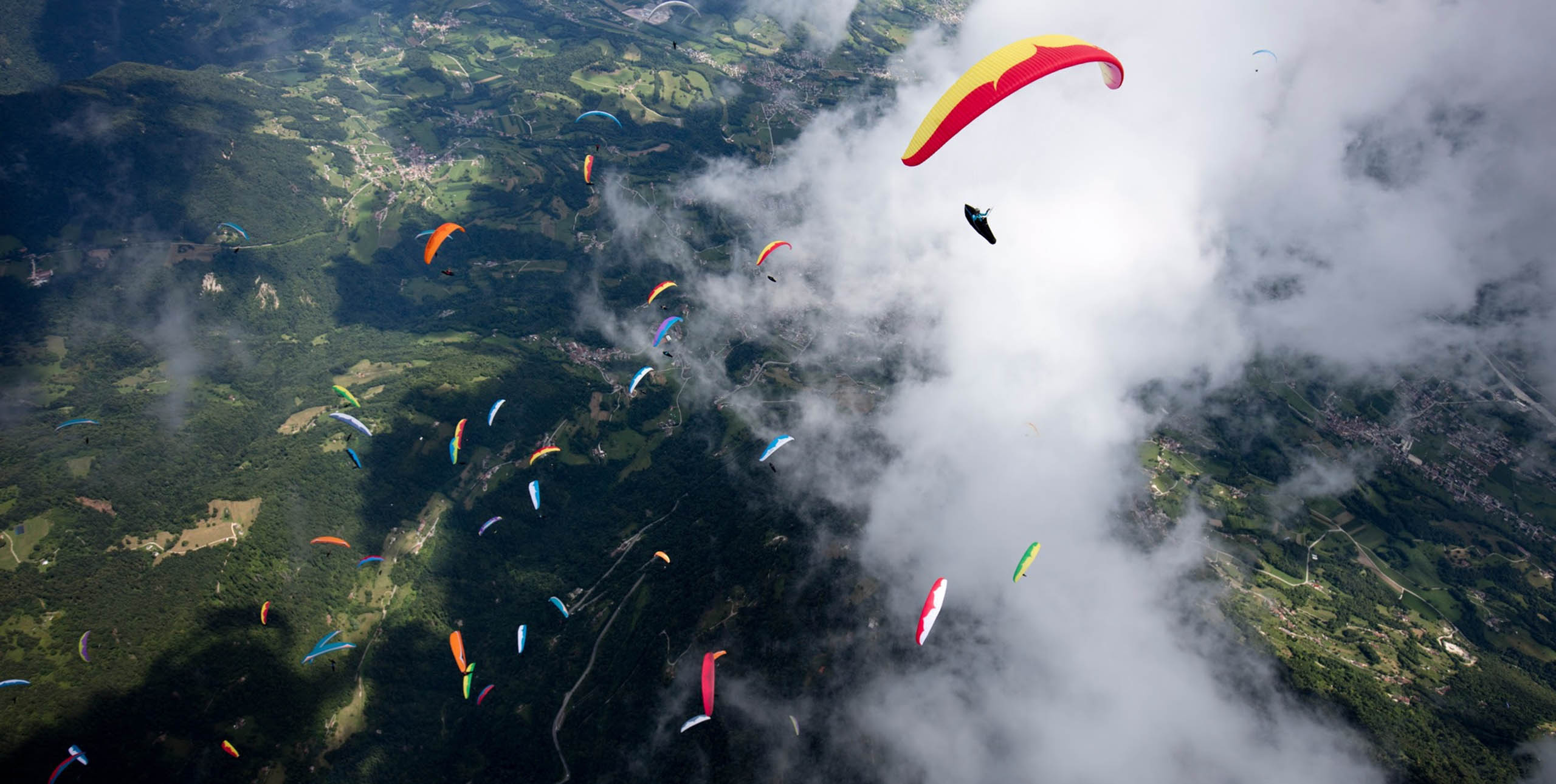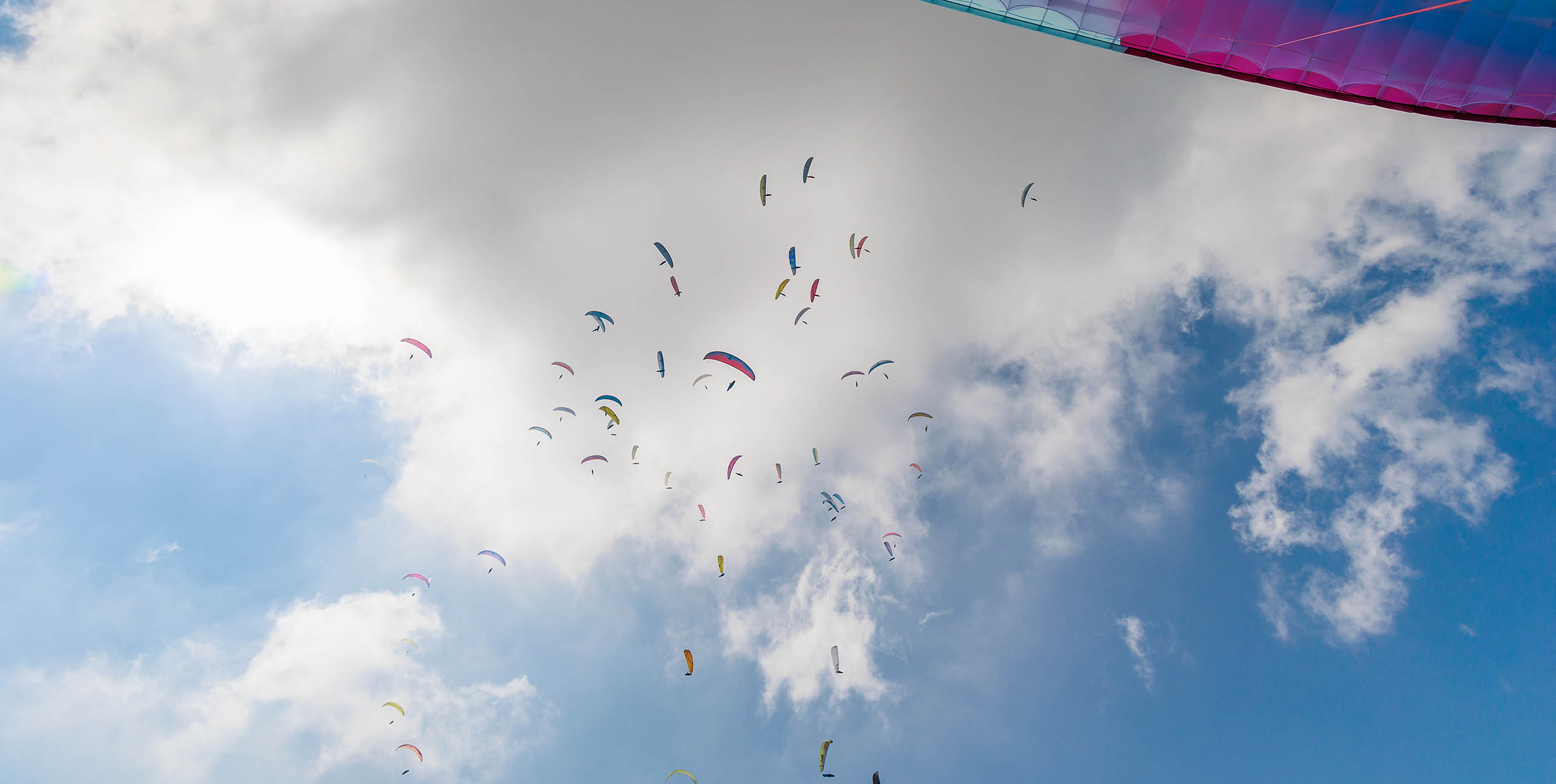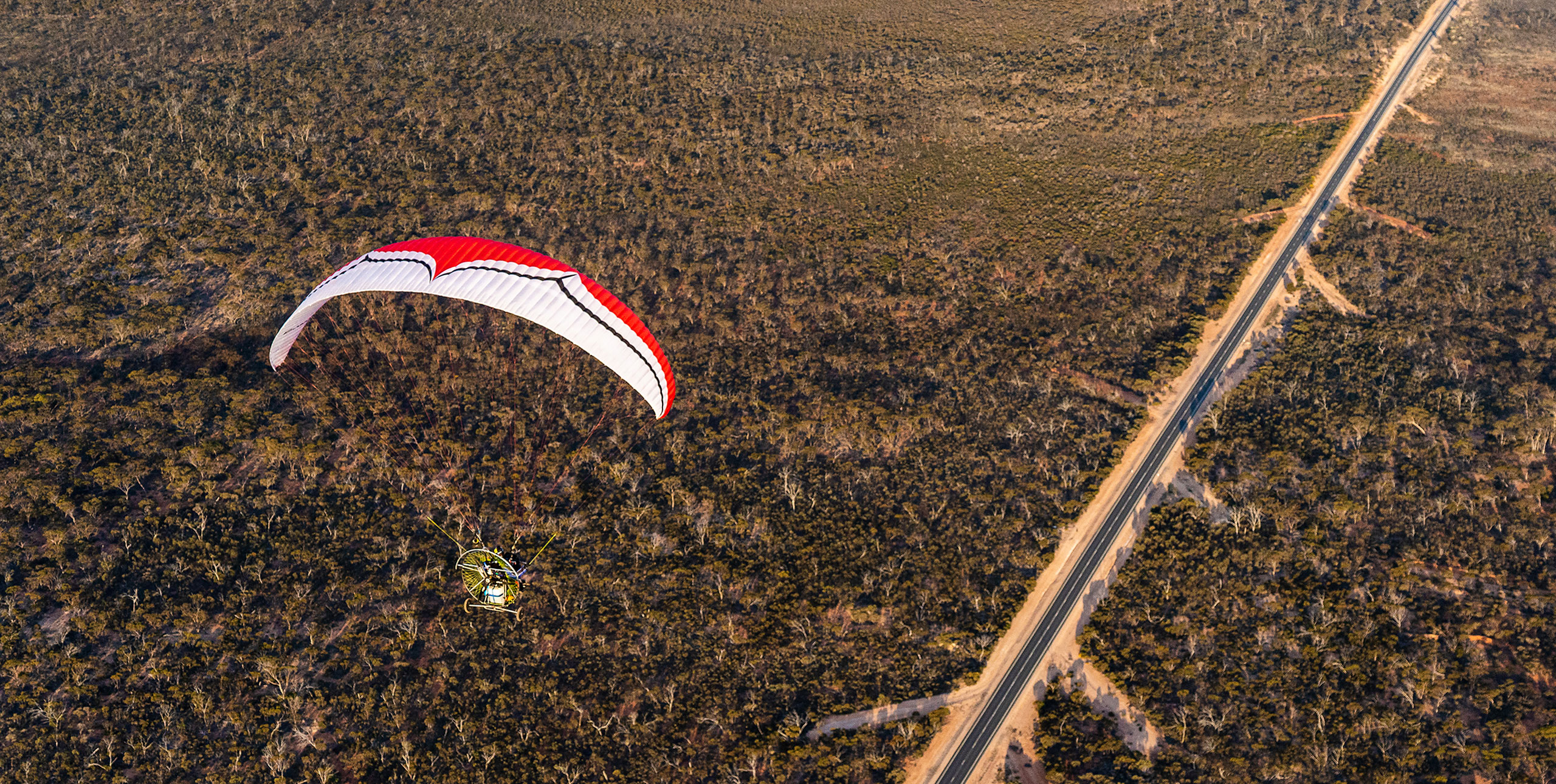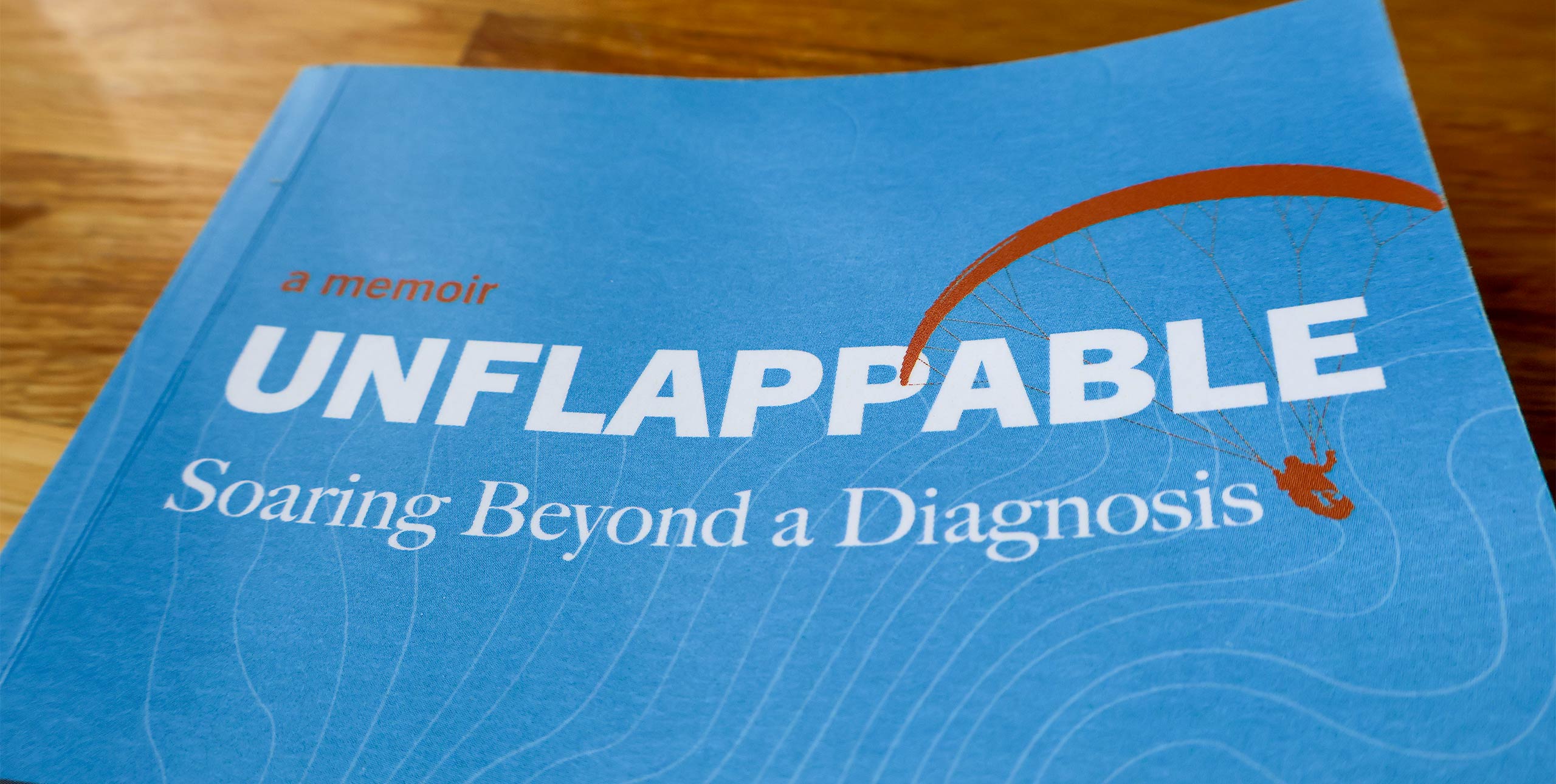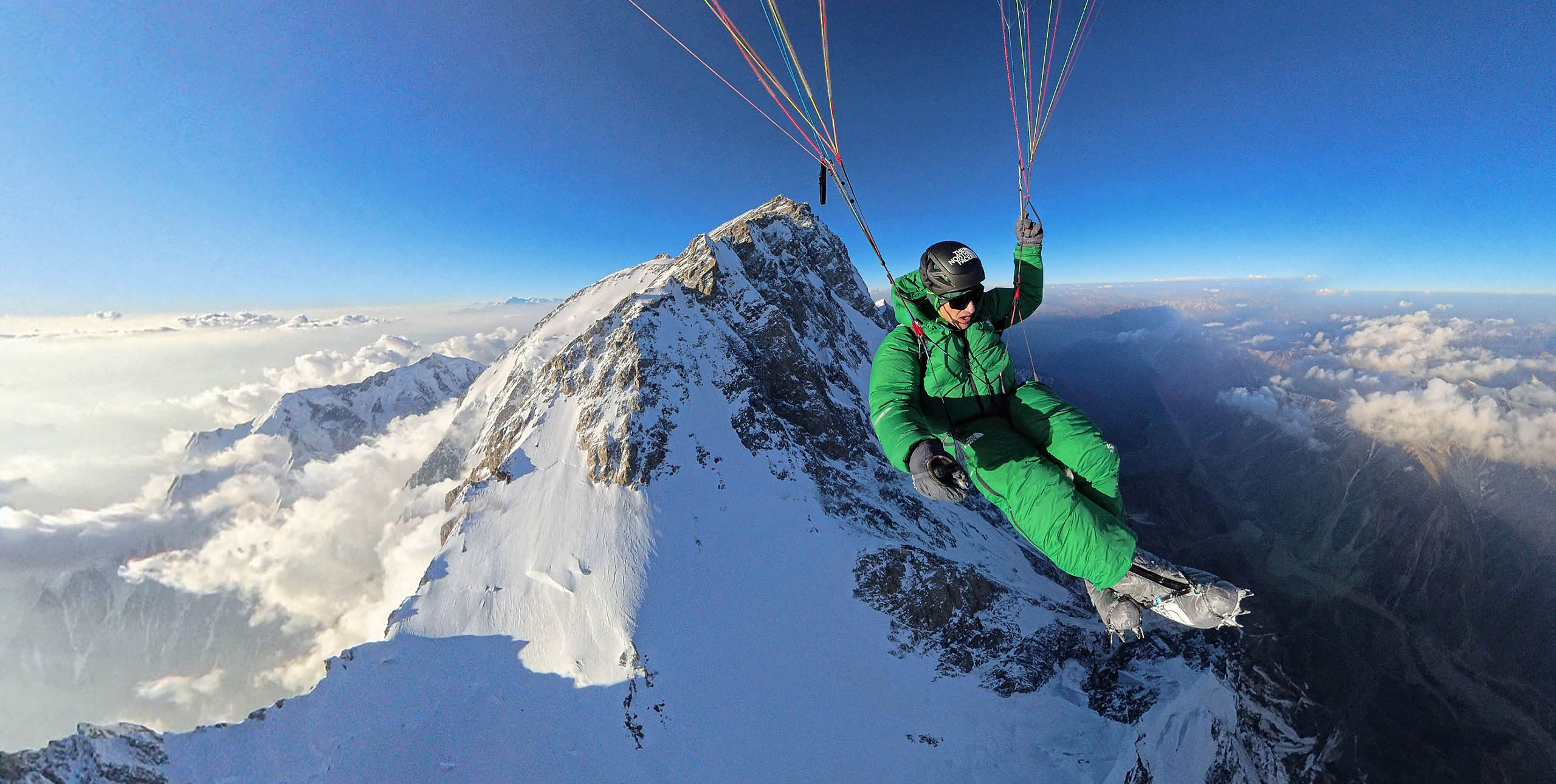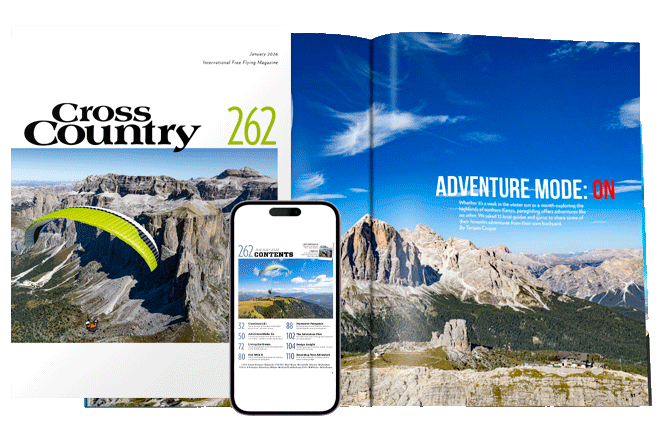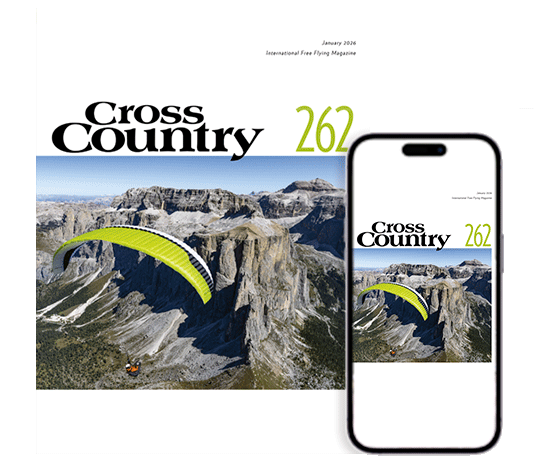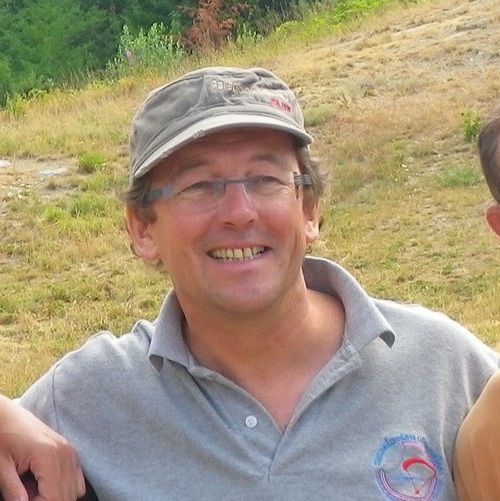
It has been a difficult night for all. Here is Kiwi’s post from Huaraz, Peru. Dated late on Friday 8 July 2011 (GMT). Xavier, you are in all our thoughts this evening. We have toasted you to the stars.
James Kiwi Johnston reports from Peru:

“The privilege of a lifetime is being who you are.” – Joseph Campbell.
The mystery of Xavier Murillo’s disappearance on July 1st while flying on the edges of the Cordillera Blanca in Peru was solved at approx 12:43pm yesterday (July 7th) when first his yellow reserve, and then finally his body and glider, were spotted by Michael Christensen and Alfredo Quintana Figueroa (the chief guide from the local Casa de Guia’s) on Huascarán Sur (6768m) at around 4,700m (not Huascarán Norte as first reported) during an aerial search of the area.
A group led by a local guide reached the body around 5.10 pm and confirmed that Xavier had died, apparently from injuries sustained in the crash-landing. Due to local laws, they stayed with the body overnight; the police search and rescue team (led by Major Marco Carrera Torres) was dispatched this morning, and Xavier’s body should be recovered by this afternoon. Local authorities will perform an autopsy of the cause of death, and arrangements for Xavier’s final resting place are being made with his family and the French Embassy.
While this was clearly not the result we had been hoping for here in Huaraz, some resolution can now be gained by this discovery. Early search-and-rescue attempts (organized by Peter Chrzanowski, the X-Andes organizer who invited Xavier to Peru to participate in the X-Andes reconnaissance) were hampered by low clouds over the mountain, and difficulty in finding aircraft suitable for the search. (There are no helicopters stationed in this area). The arrival of Michael Christensen (a Canadian paragliding pilot who live in Chile) with significant funds at his disposal to coordinate a search on the behalf of the PWC and Xavier’s family, greatly improved the situation; Michael immediately established a good raport with the local Guides (Casa de Guia’s) and the Unidad de Salvamento de Alta Montaña (the local police search-and-rescue unit), and, most importantly, was able to secure the use of a specially equipped Pilatus PC-6 Porter airplane from the Cuzco area.
This plane is designed for aerial photography and search-and-rescue operations, and unlike a conventional airplane which flies at speeds in excess of 270 km/h, the PC-6 Porter can fly at speeds as low as 80 km/ph, and actually stations a ‘spotter’ outside of the plane’s cabin (on the wing).

The area in which Xavier was finally seen, which was below the snow-line, had actually been flown over several times previously, and it was the yellow reserve that finally was noticed whilst flying perilously close to the mountain in very rough conditions. (A note to all paraglider pilots – a white wing (such as Xavier had) is a nightmare for search-and-rescue in snowy places). Michael Christensen’s team’s efforts were also aided by exceptionally clear skies and a comparatively rare lack of cloud in the high Blanca.
After a long week of difficult organization and interface with various groups on at least two continents, the news that Xavier’s body has been discovered has been received with a mixture of sadness, relief, and exhaustion here in Huaraz. After an apparently false report had him flying high over Huaraz on the day of his disappearance, I personally had still held hope that he might somehow still have been alive; news of his death has left me feeling empty and hollow, a effect that I am sure many of his friends are also feeling now.

Xavier was often a larger-than–life type of character, as well as one of the main ambassador’s of our sport, and it is a very weird feeling to know that I was one of the last people to share a thermal with him; let alone to realize the fact that if I could have gotten five hundred feet higher, I would have gladly followed him into the high peaks of the Cordillera Blanca.
Having flown paragliders for over 20 years now, I have lost friends to paragliding or hang-gliding before, experienced the carnage that seems to go hand-in-hand with major competitions, and had a close friend paralyzed for life in an accident while adventure-flying in Mexico with me some 14 years ago … but I have never had a friend fly away from me on a seemingly normal day’s flying, only never to be seen alive again.
The result is a strange and uncomfortable feeling for me personally, it has been a dark week for paragliding in general, and I am sure that many very experienced pilots like myself are feeling that same nagging feeling that we are all engaged in some kind of organized insanity. In a heavily regulated and insured world that seems to increasingly deny the existence of risk, paragliding often seems like an escape valve from the pressures of societal normality, and it cannot be denied that we (pilots) are the square pegs being squeezed into the round holes of 21st century existence.
I am aware that there are numerous armchair pilots now trying to second-guess Xavier’s decision to come to Peru; the cries that this area is too strong and rough for paragliding, that he shouldn’t have been flying a 2/3 glider, even, most insultingly in my opinion, that Xavier did not have the skills to fly here.
Well, I flying with Xavier the first day when he got here, and shared in his joy when he landed and announced that Peru was the 45th country that he had flown in; I travelled, ate, roomed, and flew with him for the week before he disappeared as part of the X-Andes reconnaissance; I laughed and joked and reminisced with him about music, paragliding, and loving life (I keep seeing the look of astonishment on his face when I told him I had flown for over 20 years and have never broken a bone); and the last conversation I had with him (before I launched) was about shooting photographs of each other in front of the magnificent 6000m peaks that lay so tantalizingly close to where we were, photography being an art-form that was dear to both of us, while operating a 35mm camera in strong thermal conditions is a past time reserved to a dedicated few.
And so, in Xavier’s defense, I will say that Xavier was the only pilot attached to the X-Andes reconnaissance that I WASN’T worried about, (Jeff Cristol and myself were not a part of Peter Chrzanowki’s team despite what he may claim … we were both intending to be in the Huaraz area paragliding at this time), and that Xavier, Jeff, and myself were looking forward to the departure of the X-Andes crew so we could get on with the serious job of flying ourselves. (Xavier was planning to stay and fly with us a couple more weeks).
View XCmag: The search for Xavier Murillo in a larger map
A Google map of the places mentioned in Kiwi’s reports from Huaraz
The day we were flying would be considered good cross-country conditions by virtually any mountain-pilot in the world, decent thermals (4-6 m/s) that were a little rough around the edges due to some wind, but nothing out of the ordinary. The photograph I took of the Huandoy massif and Huascarán from the air (while Xavier must have been still flying) shows conditions that would make most decent pilot’s salivate, and you can clearly see there is no evidence of a rotoring east-wind from the Amazon basin side of the Blanca as some have suggested; the fact that Xavier made it across the wide Llanganuco canyon/valley to reach the mighty Huascarán itself (the tallest mountain in the Blanca) would seem to indicate that there were no extreme weather conditions in play that ‘sucked’ him into the great peaks; nor did the day get as windy as it has the past week while the search-and-rescue has been going on.

Xavier was flying well enough to out-thermal Jeff and I (admittedly no great feat), and as I mentioned in an earlier dispatch, when he made the move to the main range, I cheered and wished that I were high enough to go with him.
Personally, I think Xavier had one thing in mind – taking sick photos of some of the most majestic peaks in the world from a perspective rarely seen before. I also think that there is a good chance that Xavier spent a considerable amount of time (1-2 hours) at an altitude between 4500m and 5000m, without oxygen, and that his decision-making may well have been impaired by hypoxia. (Xavier had also had a stomach ailment for the previous few days … a lingering illness and high-altitude are never a good combination).

The fact that his reserve was deployed clearly shows he ran into some major air – and knowing Xavier he may well have been shooting photographs at the time. It should also be noted – in Peter Chrzanowski’s defense – that this tragedy could have just as easily happened after the X-Andes reconnaissance had left town, when it would have been only Xavier, Jeff, and myself flying alone.
As for the contention that this area is too strong/rough/windy for paragliding, there is no doubt that the mountains of the Cordillera Blanca are probably second only to the Himalaya in scale and majesty; and yet, much like India, where you can safely fly in the front-range of the Himalaya in the Kangra Valley around Bir, here we are generally flying the snowless Cordillera Negra mountains on the opposite side of the Callejon de Huaylas valley, which offer both good flying and spectacular views.
While this is clearly not the kind of terrain for ANY kind of competition, for those interested in true adventure-flying, where the safety net is consciously removed, this area offers much potential for experienced, well-equipped two-pilot (or more) teams of experienced mountain-pilots, who ideally have some alpine climbing experience as well.
But I am reminded of my good friend Rob Whittal’s definition of adventure-flying; which is that you are operating in any area where you can die of even a broken-leg due to lack of rescue facilities. This indisputable fact has been driven home here in Peru this past week; and the only thing that could have increased Xavier’s chances of survival would have been had he been flying with a SPOT transmitter (as Jeff and I were); this particular piece of equipment should now be regarded as indispensible as a reserve for any serious XC pilots, and it is seriously regrettable that Xavier (like many old-school pilots who have been adventure flying around the globe over the past 20 years) did not recognize the great advantages in owning one of these remarkable devices.
An easy statement to make in retrospect; but I do not wish to join those armchair critics. Personally I hate the old cliché that ’he died doing what he loved’ – I tend to think this is a cop-out that makes living (and flying) easier for the rest of us.
But in this case it is hard not to recognize the joy in Xavier’s life, and the great service he gave to a sport he clearly loved with an intense passion. My condolences go to his family, my thanks to Michael Christensen (and the PWC) and his tireless efforts to find Xavier in a week filled with personal tragedy, both here in Huaraz, and in far-away Piedrahita.
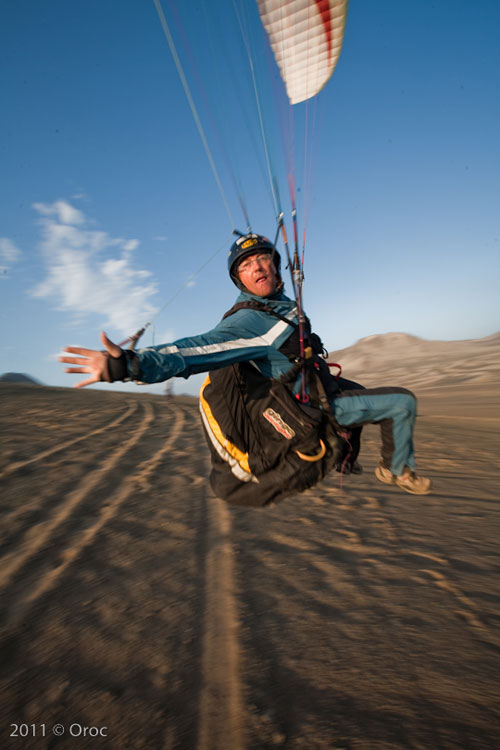
I would like to also thank all of you who contributed to Xavier’s search-and-rescue fund, the great global out-pouring of support over the past week is the best indictor of how much Xavier was loved and respected within our sport. Personally, I will always remember the child-like joy of him soaring the dunes of the coast that my photograph of him clearly shows; and the tremendous excitement he had, anticipating the photographs he would return with after our flight into the Blanca, the view as we thermalled up from launch as spectacular a any in the world. I think all that knew him would agree that he was a One-of-a-Kind, a square-peg that never looked for a round hole to fit in, preferring to create his own world and his own reality. And in that accomplishment I feel that his remarkable life is a lesson to us all.
“Security is mostly a superstition. It does not exist in nature, nor do the children of men as a whole experience it. Avoiding danger is no safer in the long run than outright exposure. Life is either a daring adventure, or nothing (at all). “- Helen Keller
Correction: I mistakenly reported (on information provided by him) that Peter Chrzanowski left Huaraz the day before Xavier was found. He in fact left the following day.
• Editor’s note: Thank you Kiwi, for reporting.
More at these links
• Xavier is Missing Facebook group
• Xavier is Missing Paraglidingforum.com thread
• All our news on Xavier Murillo
• Comments are open below


